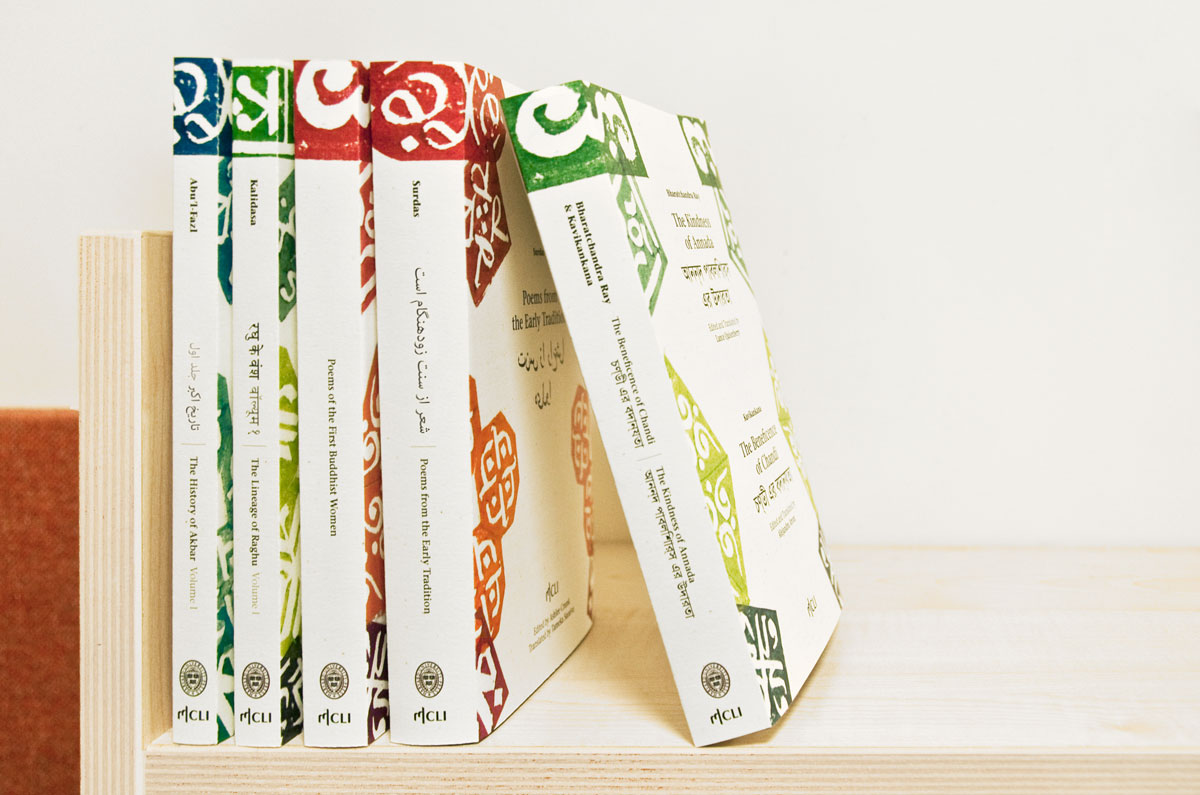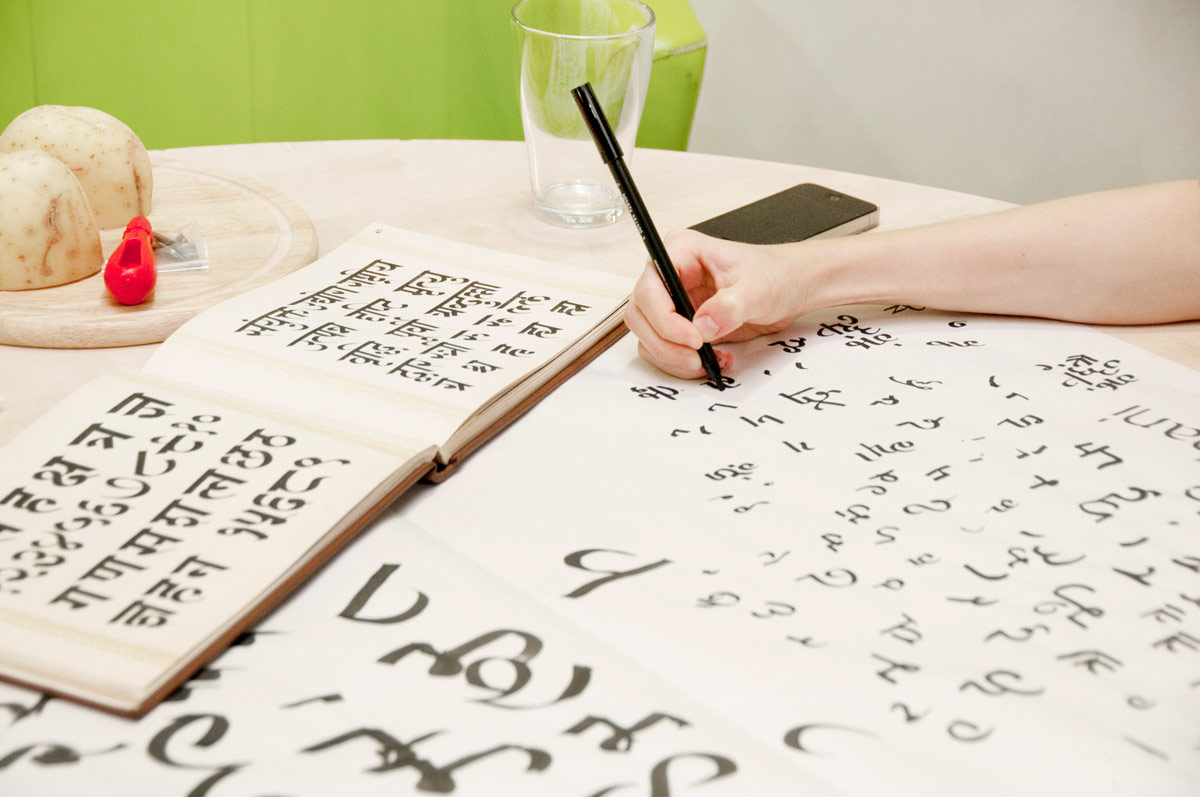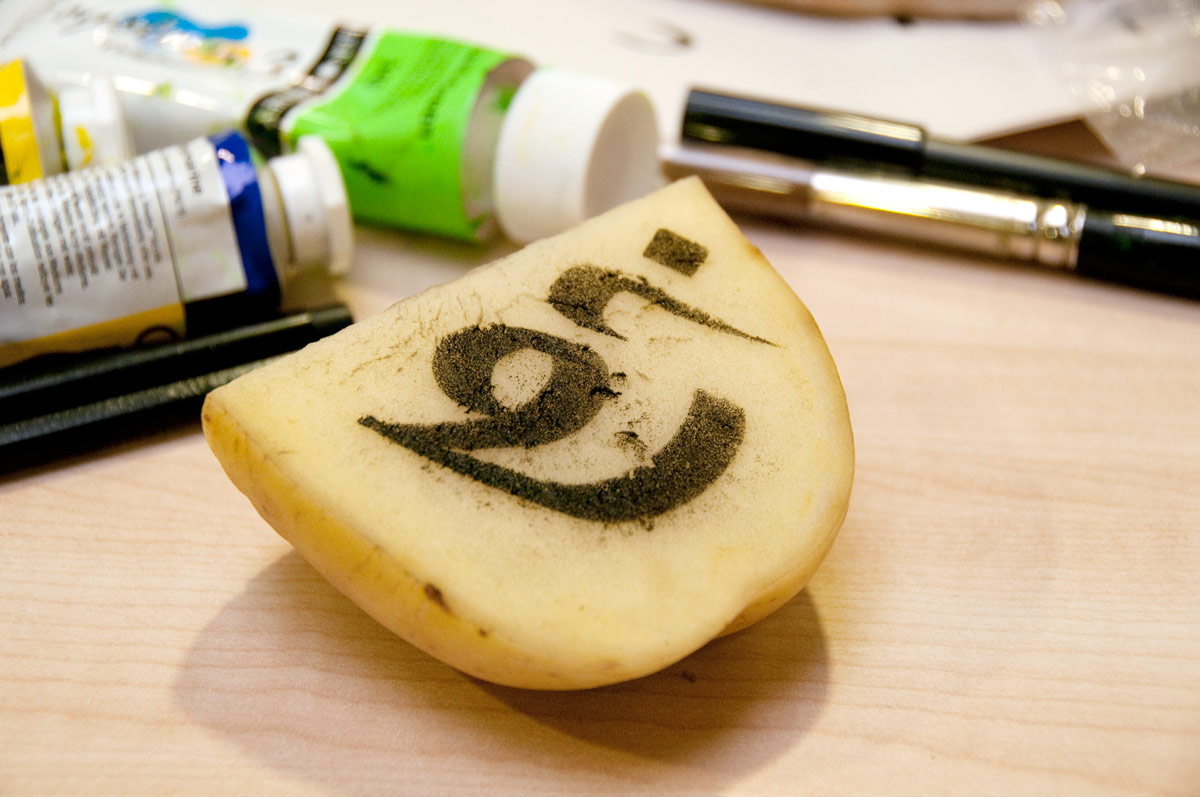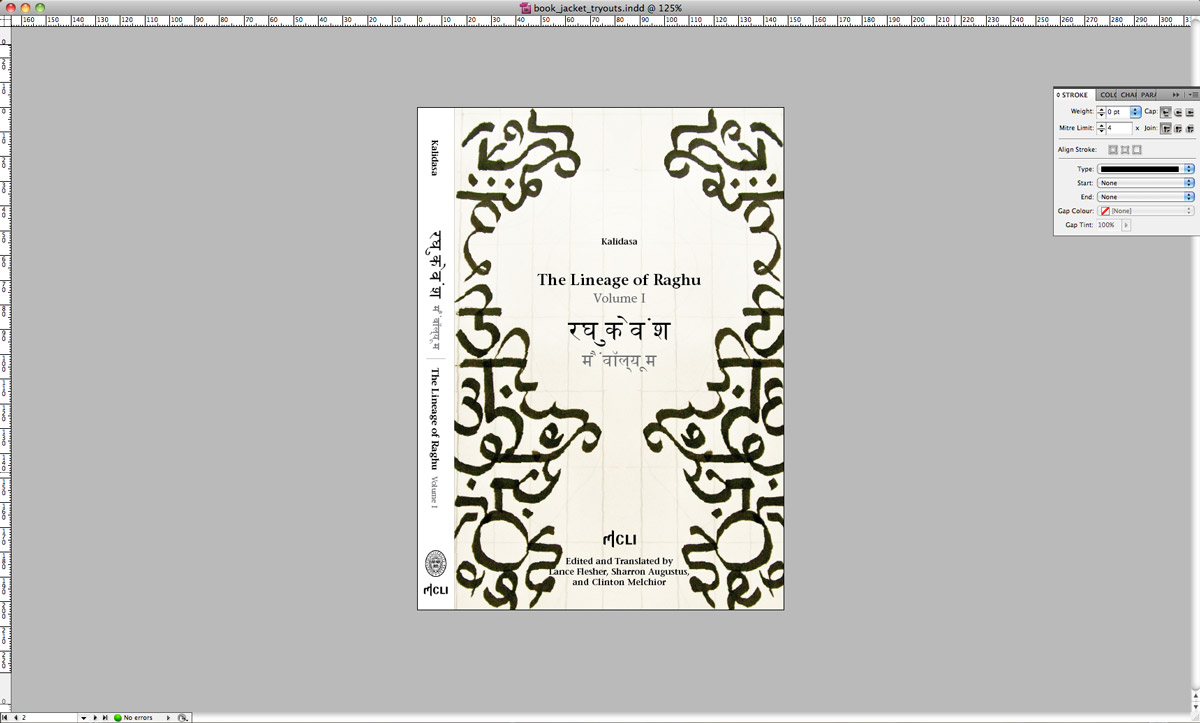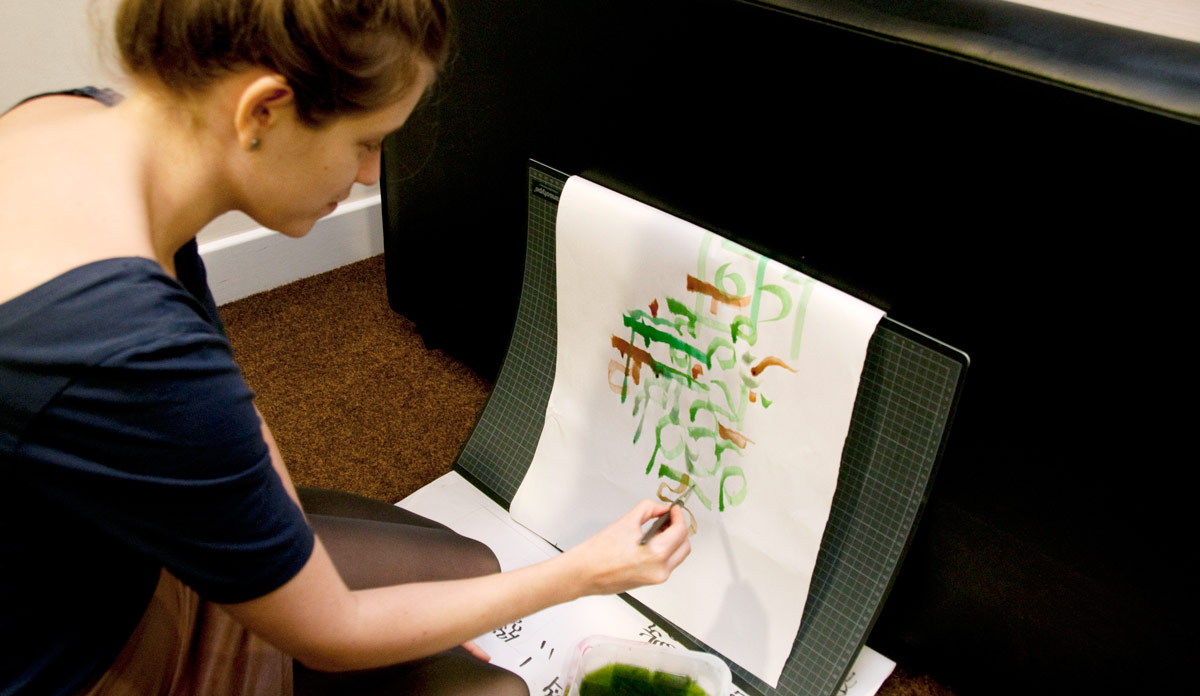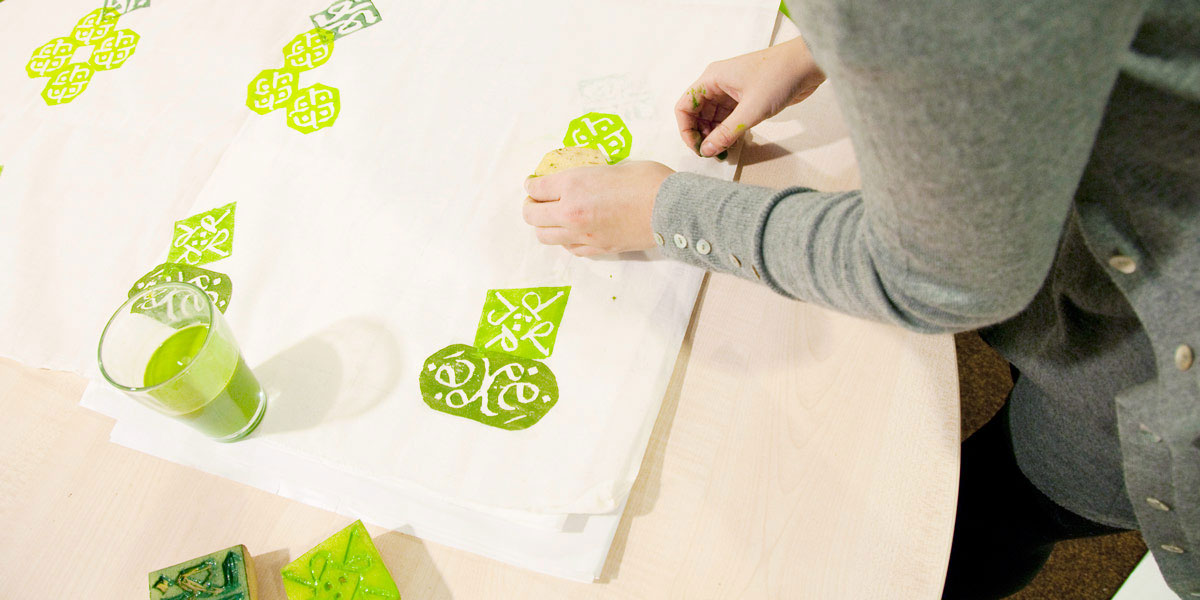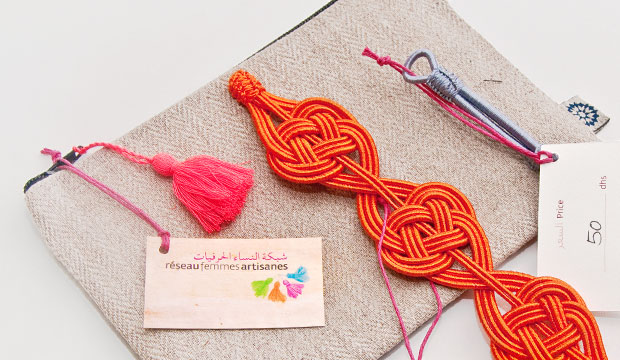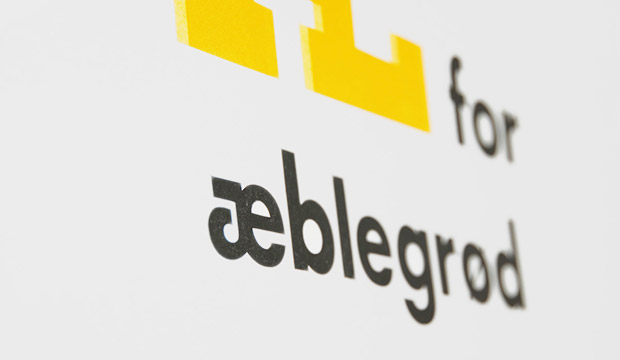The design
Inspired by letters as forms and Indian ornamented block printing, we created a visual system of book covers. The underlying idea is that the patterns indirectly tell you which Indian script the book is written in. The colour of the cover refers to the literary genre of the book.
Instead of using traditional floral and abstract patterns, we created a new set of symbols based on the different Indian scripts. Each pattern element on the covers is constructed from bits and pieces of the alphabet in which the book was originally written, such as Bengali or Persian.
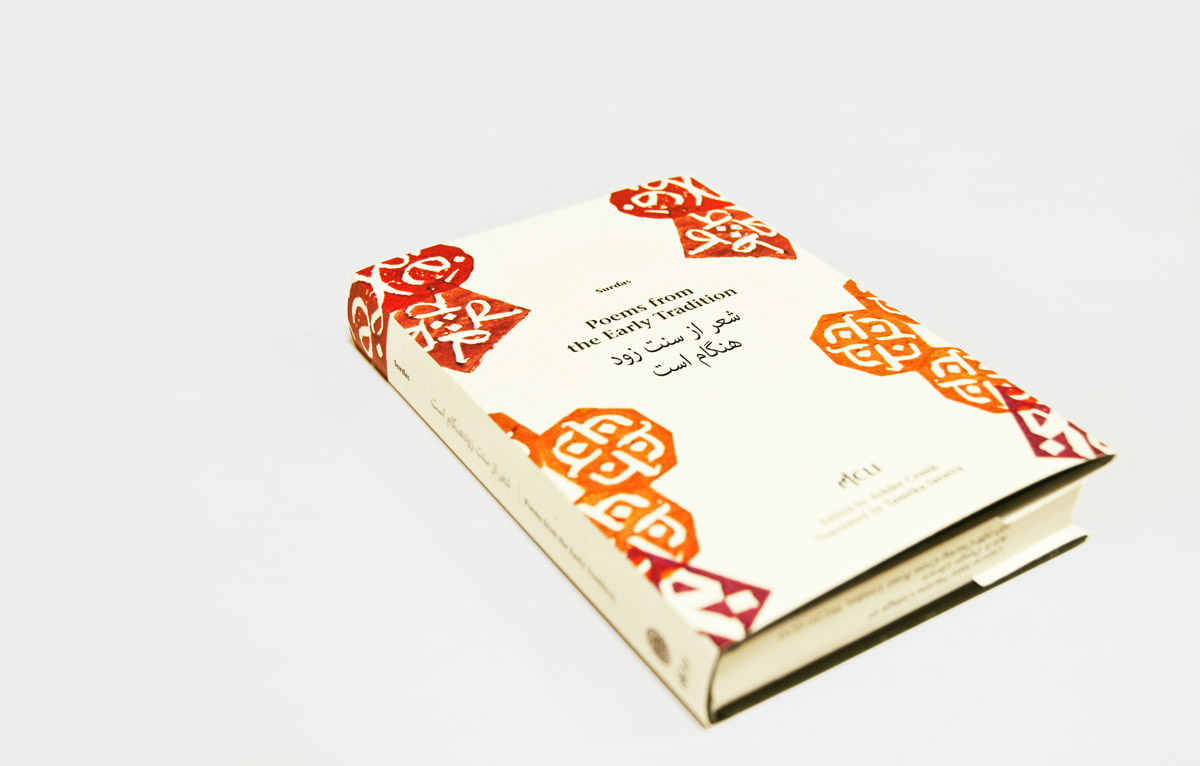
An example of a book jacket for a poetry book in Persian.
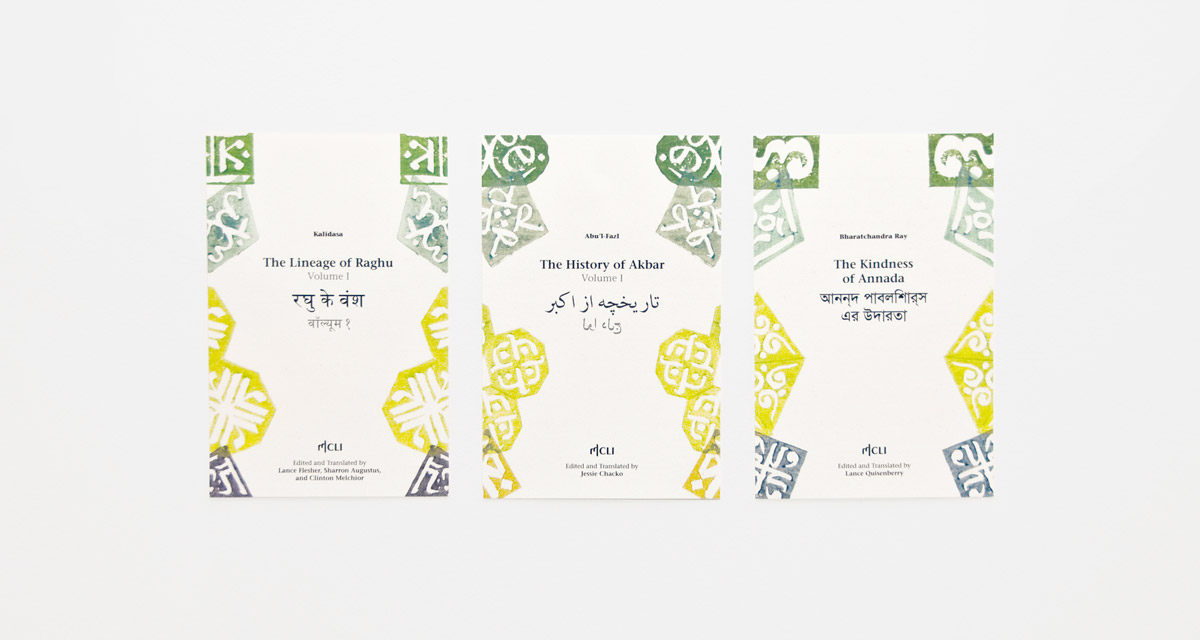
The patterns change depending on which script the text originally was written in.
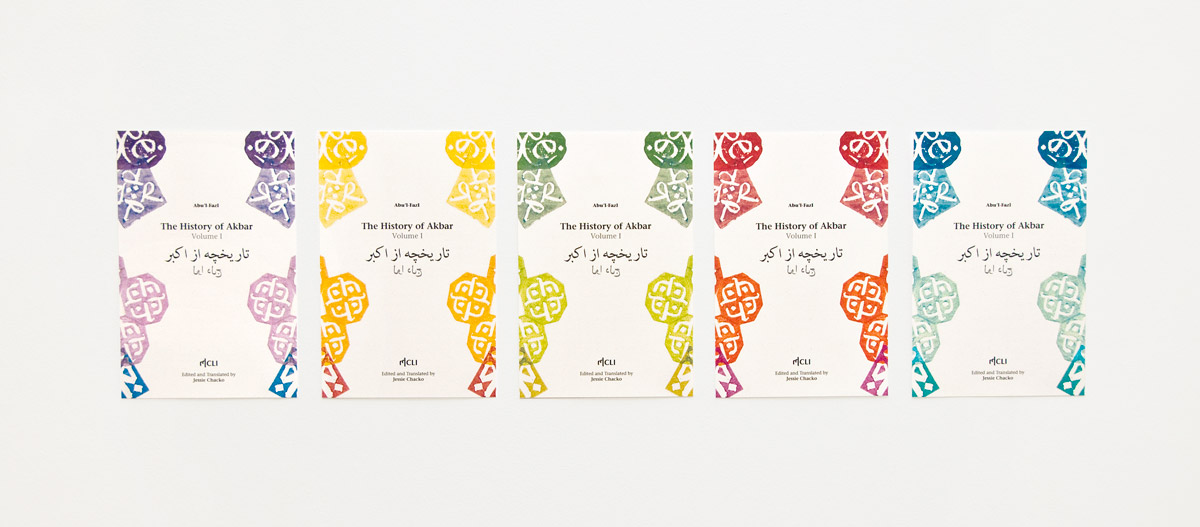
The colours change depending on the genre of the book.
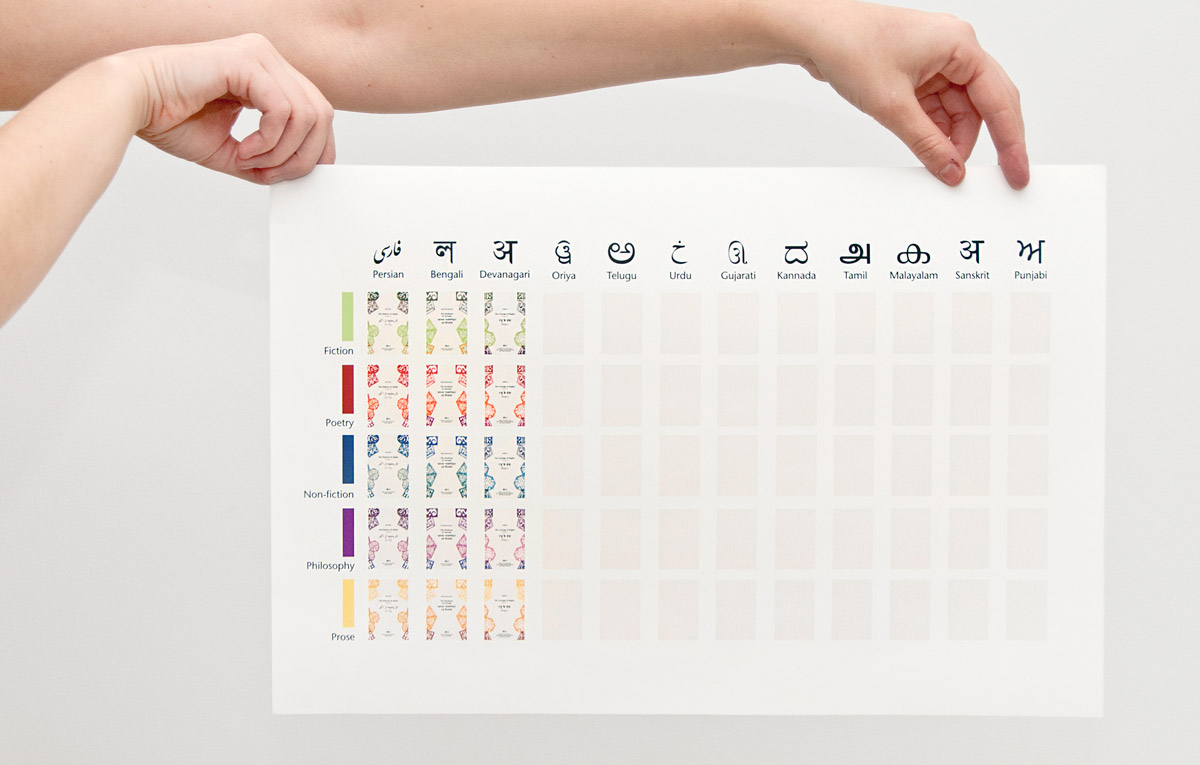
Our system creates a wide variety of covers, more precisely 60 different book jackets — when dealing with the 12 different written languages used in India and five literary genres — which are still recognisable and consistent.
